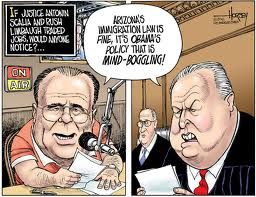Shell gears up for new Arctic quest
By Jennifer A. Dlouhy, Houston Chronicle
Sunday, June 24, 2012
In Valdez, about 800 miles from Shell’s planned Arctic wells, the company has spent weeks training recruits how to deploy inflatable booms to corral floating crude so skimmers can suck it up.
…
But while federal regulators have approved Shell’s broad drilling plans and signed off on the company’s emergency plans for the region, the technology for sopping up spilled oil hasn’t been tested publicly in U.S. Arctic waters in 12 years, and the results weren’t encouraging.During that earlier test, skimmers failed and floating ice slipped under booms meant to corral crude.
Shell tries to contain skepticism in Arctic
By Jennifer A. Dlouhy, Houston Chronicle
Sunday, June 24, 2012
Shell’s sizable armada doesn’t carry enough equipment to satisfy environmentalists who argue that existing technology can sop up only a small percentage of spilled crude, even from calm, warm seas. They warn that the equipment’s success rate might be worse in the Arctic, especially if waters are slushy or covered in ice.
Federal regulators have approved Shell’s oil spill response plans for the region, which describe a scenario for recovering 95 percent of the oil spilled. It would use an under-water containment system including a capping stack – an array of valves and other equipment that would be lowered to the ocean floor to plug a gushing well – along with skimmers, booms, chemical dispersants and burn-off of floating crude.
Mike LeVine, the Pacific senior counsel for the conservation group Oceana, scoffed at the 95 percent target.
He noted that only 8 percent of the oil was removed after the Exxon Valdez spill and 10 percent from spills in the Gulf of Mexico.
“The idea they could somehow magically get to 10 times that seems absurd to us,” LeVine said.
Oil Trades Below $80 for a Third Day on Economic Outlook
By Sherry Su and Ben Sharples, Bloomberg News
Jun 25, 2012 7:58 AM ET
Oil traded below $80 a barrel for a third day in New York amid concern that Europe’s debt crisis will curb demand for fuels.
Futures slid as much as 1.2 percent as George Soros warned that a failure by European Union leaders meeting this week to produce drastic measures could spell the demise of the bloc’s shared currency. Developed economies are running into the limits of monetary policy, the Bank for International Settlements said in its annual report yesterday. Oil earlier rose as much as 1.2 percent after Tropical Storm Debby approached oil and gas installations in the Gulf of Mexico.
“The outlook for oil remains negative while concerns remain about the economic outlook in Europe weigh on demand,” Michael Hewson, a London-based analyst at CMC Markets, which handles about $240 million a day in U.S. crude contracts, said today in an e-mail. “Investors remain skeptical that EU leaders will be able to agree on anything tangible to alleviate the current crisis.”
TransCanada wins 1 of 3 US nods for Keystone line
Reuters
Wed Jun 27, 2012 12:07am IST
CALGARY, Alberta, June 26 (Reuters) – The U.S. Army Corps of Engineers has granted TransCanada Corp one of three permits it needs to build the $2.3 billion southern section of the Keystone XL pipeline, a project President Barack Obama had pledged to move forward quickly.
…
The southern section would carry 830,000 barrels a day of crude to Texas refineries from the glutted Cushing, Oklahoma, storage hub with the aims of helping to raise deeply discounted prices and providing the region more secure oil supplies.
My emphasis.

 In his dissenting opinion on the
In his dissenting opinion on the 
Recent Comments